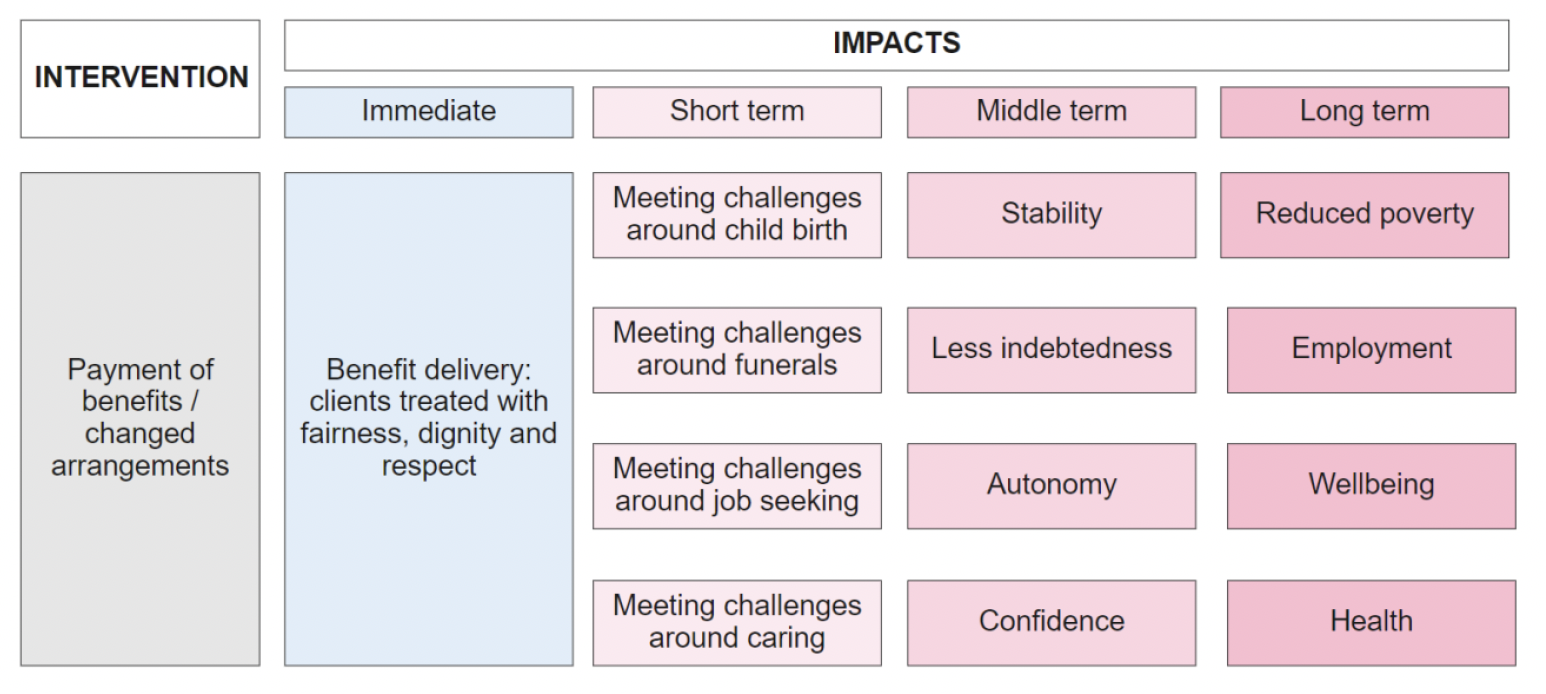Devolution of disability benefits: evaluation strategy
The strategy for evaluating the devolution of disability benefits to Scotland.
This document is part of a collection
Annex A: Example logic model for low-income and early carer benefits evaluation
The evaluation approach for low-income and early carer benefits introduced up to 2020 used a theory of change approach. This can be used to investigate net impacts by exploring the causal chains thought to bring about change by an intervention.
Logic models were used to identify how the benefit itself, and the way the benefit was delivered, could be expected to achieve the expected short- and medium-term policy outcomes by documenting the causal steps that lead from one outcome to the other. They were also used to assess the likely contribution to wider social security and long-term government objectives.
Below is an example of a logic model relevant to low-income and early carer benefits evaluation. Evaluation projects of policies associated with disability benefits will also follow a theory of change approach which will allow us to identify the relationships between what we intended to achieve by the individual and combined policy changes, and what the outcomes have been.

Contact
Email: socialresearch@gov.scot
There is a problem
Thanks for your feedback